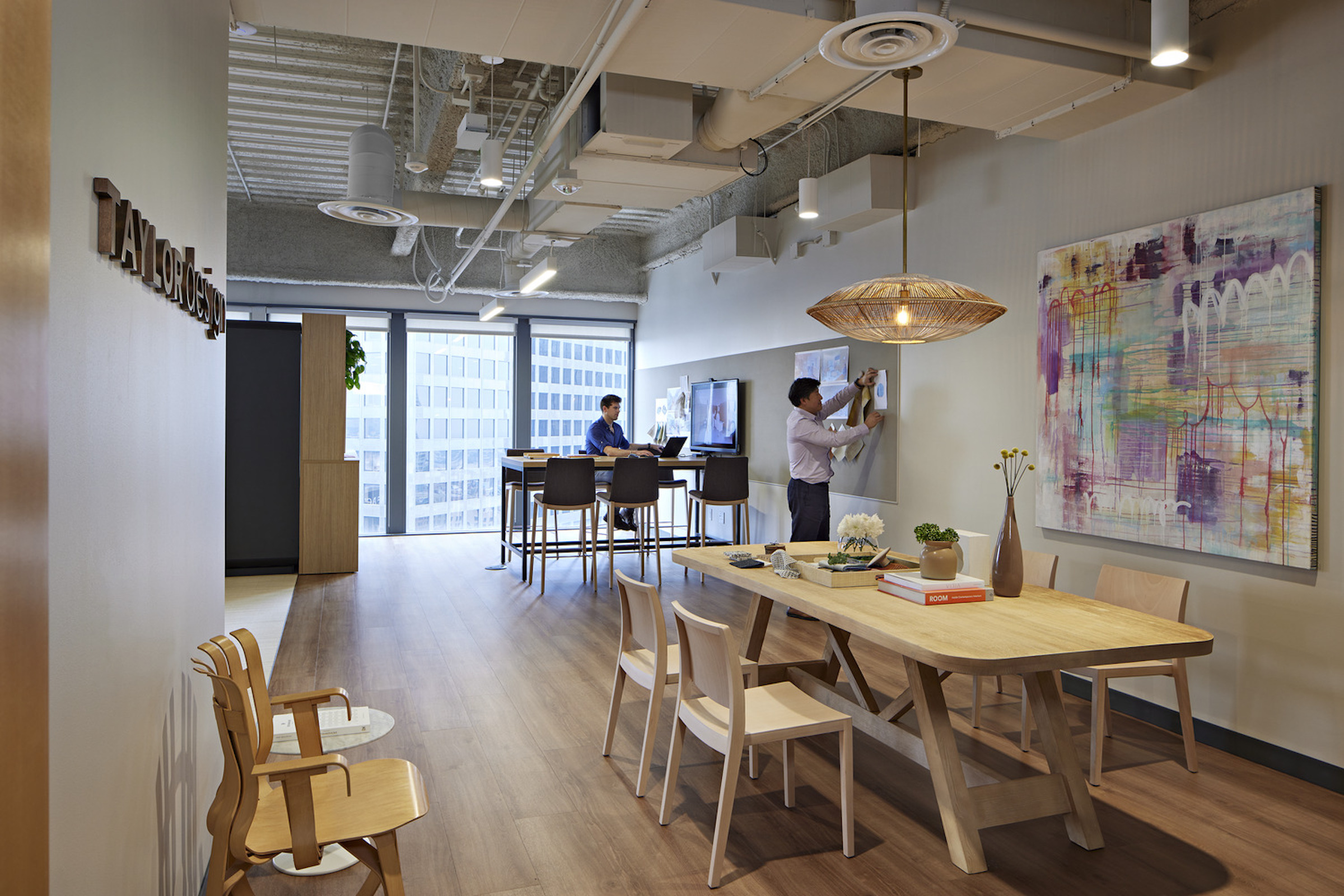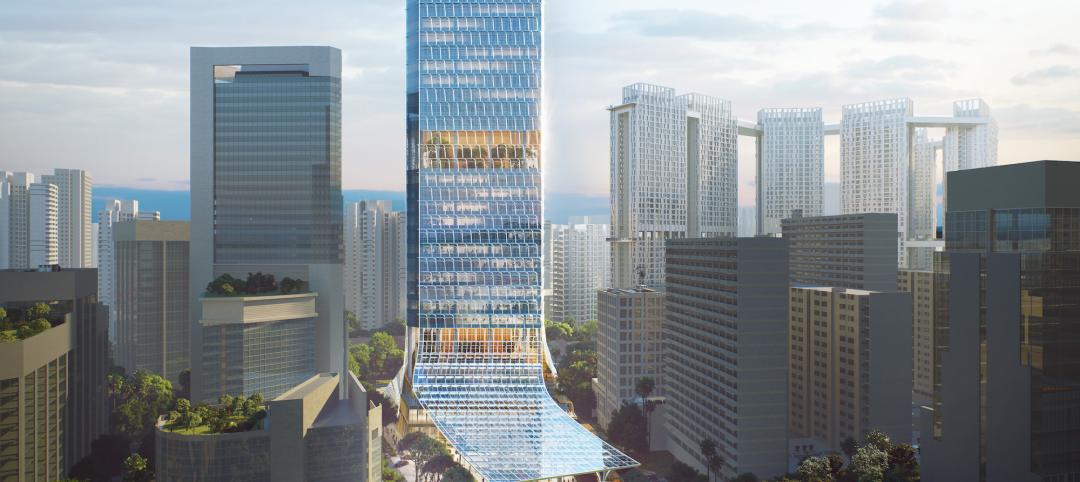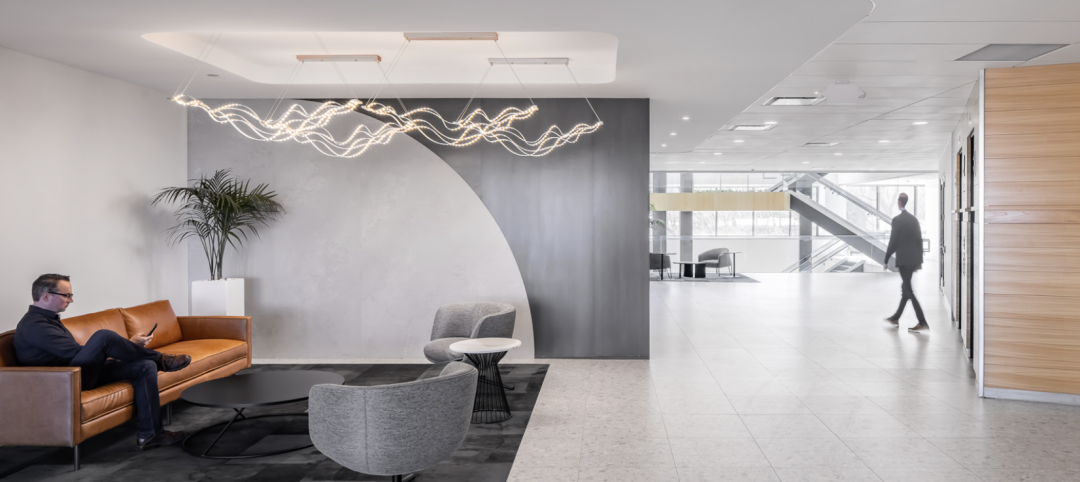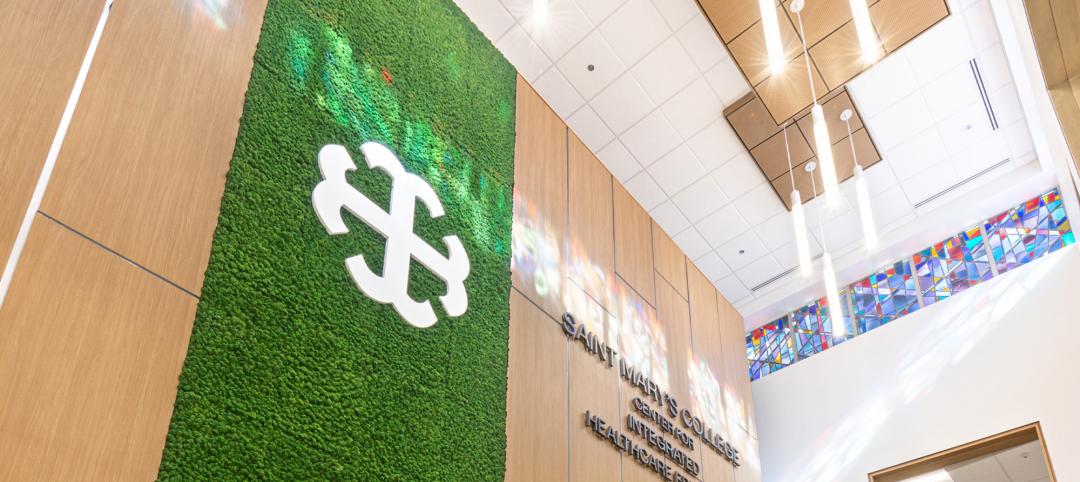Companies create design standards for many reasons, including brand recognition and to simplify the procurement process. These standards provide explicit direction for the way the company uses art, lighting, space layouts, furniture, fabrics, security, technology and many other components of the design process.
Design standards can serve another purpose — to help the design team understand how much of the project must “stay within the lines” and how much is subject to creative interpretation. Because this ratio is often about 70%-30%, we use the term “Find Your 30” at Taylor Design.
This is an approximation, of course. We settled on “Find Your 30,” but every organization carries different standards, priorities and brand-driven requirements into a design project. For some companies, the ratio is 90%-10%; for others it may be closer to 50%-50%. When we designed our new Sacramento, Los Angeles and Orange County offices, we ensured that our breakdown was 70%-30%.
What does “Find Your 30” mean?
It is as important to identify your ideal ratio as it is to decide to create design standards in the first place. This informs the designer exactly how much freedom they have to use their skill and creativity to celebrate a unique culture from location to location.
Finding Your 30 gives each office a sense of autonomy, and it allows for bigger and broader concepts that emphasize distinctive cultural, historic or other similar attributes. While the “70” holds true to the company’s requirements for branding, company colors, furniture and materials, the “30” affords the designer – in collaboration with the owner and their team – the opportunity to deviate from the standards and introduce artwork, fittings, color accents and other elements that communicate a sense of community and ownership. This freer expression is often used to highlight cultural and historic aspects of the physical location, but can also reference other qualities, such as the firm’s mission, history, signature work or founding partners.
Why is this important?
When a design team goes into a project fully aware of what is flexible and what is not, it saves time, which saves money. Also, when you fail to define the ratio – to Find Your 30 – you lose an opportunity to simultaneously illustrate brand consistency with a uniqueness of place. This is particularly true in a renovation setting, where the goal is to seamlessly marry existing finishes with newly created standards in a complementary way. This lack of direction can lead to decisions being made on the fly, often badly. It invites confusion, crushes momentum and can cast a pall over the entire project.
The challenge and opportunity
Taylor Design approached its latest office space updates with a firm commitment to allowing each office 30% choice to promote the uniqueness of their space. Like many multiple-office firms, we encountered both lease extensions and entirely new locations, which added to the challenge. As we set about creating spaces that represent the singular Taylor Design Brand, while giving each location room to design a thoughtful story, we asked ourselves a number of questions:
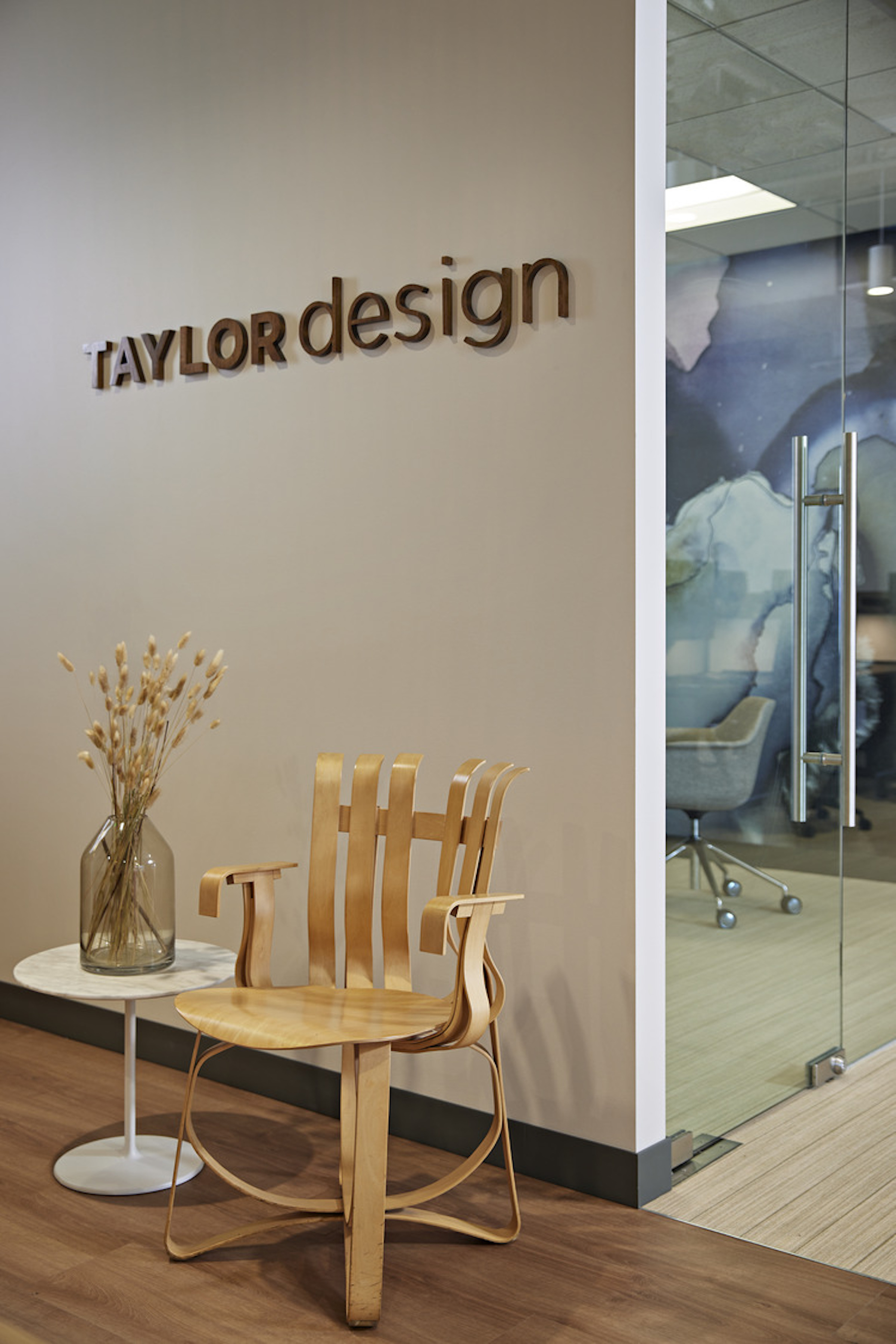
What do we want clients and employees to feel and think about when they are in the space? As both designers ourselves and occupants of the space, we know that the answer lies in telling a lasting narrative about who Taylor Design is, what we stand for, and how the occupants of this particular office are firmly in the Taylor Design fold, yet also representative of the characteristics of the locality. The “30” helps to define the entire experience.
What standards should we employ? Standards in this context offer two parallel benefits: they help accentuate the brand (e.g., values, mission) and illustrate the culture (e.g., what makes us different). The goal is to craft a meaningful story within our spaces that keeps our mission front and center — “Design that Empowers People” — while sharing who we are as a distinctive community of designers.
Should we concentrate the “30” in a single part of the office or spread it throughout? In some cases, but especially when the ratio is 90%-10%, the creative component is limited to one space – often the lobby. We decided quickly that we wanted to weave our 30% throughout the space. One of the ways we decided to represent the uniqueness of place within the context of Taylor Design was to ask our founder, Linda Taylor, to use her remarkable artistic talent to provide paintings that are specific to each location. As a result, her artwork graces multiple locations in each office. Also, with the full 30% to work with, we had sufficient room to convey our story in multiple areas, including deep into the space to help emphasize brand identity to visitors and to our staff.
Which design elements fall in both the 70% and the 30%? The theory of “Find Your 30” doesn’t require every design component to fall within one camp or the other; it can sometimes be in both. For example, in our office renovations, employees shared their personal inspirations with Linda Taylor to help stimulate the original artwork of each location. Commissioning Linda to contribute paintings falls in the 70% standard – each office will have a piece of her art. However, because each piece reflects the unique inspiration of the employees in the office, it also falls within the 30%. The same holds true for engaging with local community artists. Each office location worked with and commissioned an original piece of art from a community artist. As with our founder’s art, the community artist’s work is part of both the 70% and the 30%.
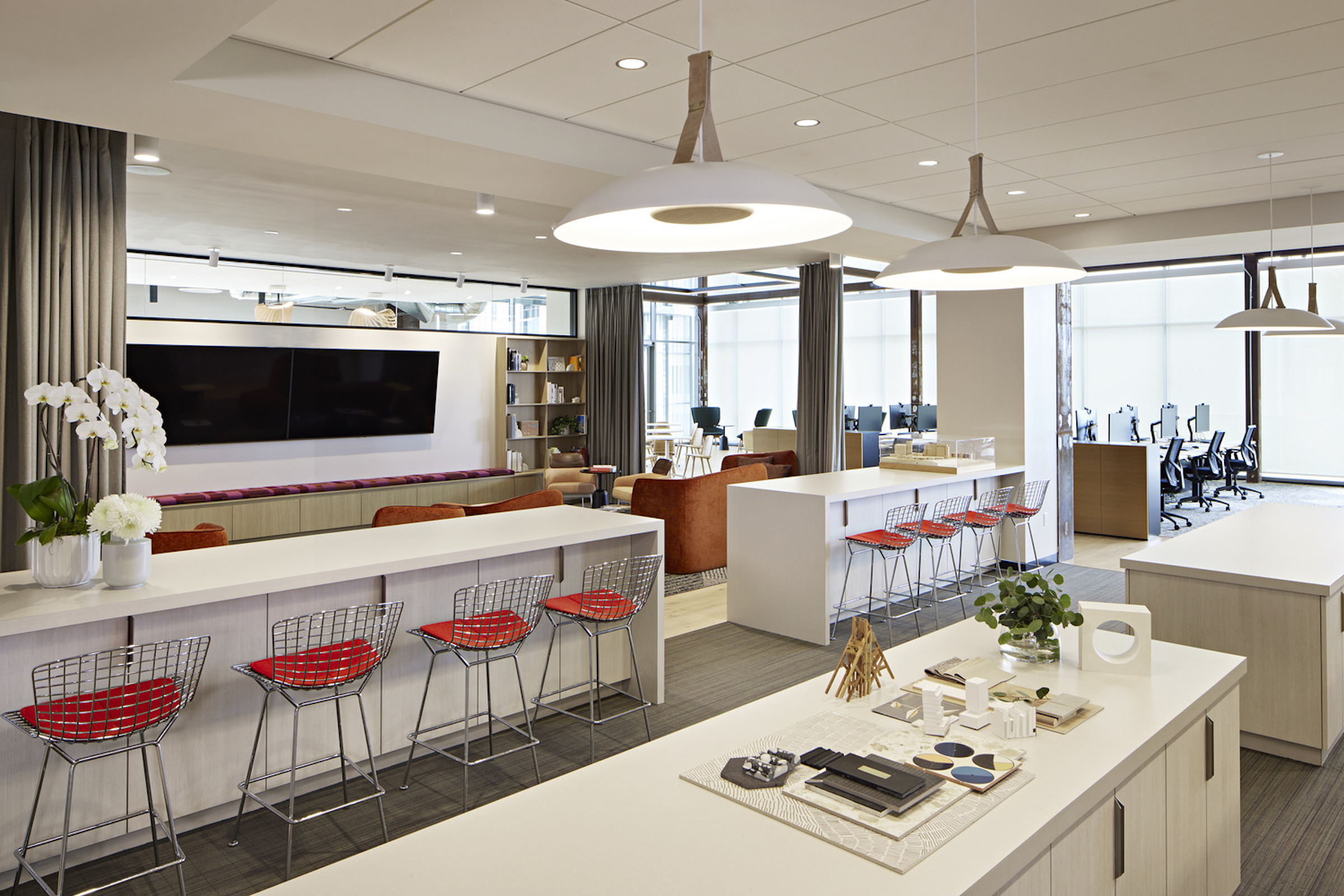
How should we get where we want to be? We held workshops featuring exercises that helped define the challenge of each space and seek solutions within the framework of Find Your 30. We used 70%-30% as an aid to determine whether a challenge or solution belonged to the rigid design standards of the former, or the freedom of expression in the latter. For example, we specified material, including natural grass and a graphic wallcovering, explicitly to illustrate to our clients’ how to introduce biophilia in sophisticated ways.
At the heart of it, Find Your 30 is about the experience of a place. Experience is defined by the culture – it’s the feeling you carry with you after you leave. It is the layering of information and how it eventually comes together as a cohesive story. It is about the things that make a space memorable. So when a design team adapts design standards appropriately and insightfully, within the context of the 70%-30% rule, the result is a space that supports and enhances your organization’s message, mission and values.
About the Author
Stephanie L’Estrange is Principal/Director of Interior Design for Taylor Design, a multidiscipline design firm with five offices in California.
Related Stories
Office Buildings | Aug 1, 2023
Creating a nurturing environment: The value of a mother’s room in the workplace
Since becoming an architect, Rebecca Martin of Design Collaborative has drawn a mother’s room into numerous projects. But it wasn't until she became a mom that she fully appreciated their importance in the workspace.
Adaptive Reuse | Jul 27, 2023
Number of U.S. adaptive reuse projects jumps to 122,000 from 77,000
The number of adaptive reuse projects in the pipeline grew to a record 122,000 in 2023 from 77,000 registered last year, according to RentCafe’s annual Adaptive Reuse Report. Of the 122,000 apartments currently undergoing conversion, 45,000 are the result of office repurposing, representing 37% of the total, followed by hotels (23% of future projects).
High-rise Construction | Jul 26, 2023
A 33-story Singapore tower aims to reimagine work with restorative, outdoor spaces
Architecture firm NBBJ has unveiled design details for Keppel South Central, a commercial tower in Singapore. The project, which is slated for completion in late 2024, will transform the original Keppel Towers into a 33-story, energy-efficient building that aims to reimagine work by providing restorative spaces and connections to the outdoors.
Multifamily Housing | Jul 25, 2023
San Francisco seeks proposals for adaptive reuse of underutilized downtown office buildings
The City of San Francisco released a Request For Interest to identify office building conversions that city officials could help expedite with zoning changes, regulatory measures, and financial incentives.
Market Data | Jul 24, 2023
Leading economists call for 2% increase in building construction spending in 2024
Following a 19.7% surge in spending for commercial, institutional, and industrial buildings in 2023, leading construction industry economists expect spending growth to come back to earth in 2024, according to the July 2023 AIA Consensus Construction Forecast Panel.
Office Buildings | Jul 24, 2023
A twist on office conversions maximizes leasable space
A recent NELSON Worldwide project is made more suitable for multiple workplace tenants.
Biophilic Design | Jul 20, 2023
Transform your work environment with biophilic design
Lauren Elliott, Director of Interior Design, Design Collaborative, shares various ways biophilic design elements can be incorporated into the office space.
Office Buildings | Jul 20, 2023
The co-worker as the new office amenity
Incentivizing, rather than mandating the return to the office, is the key to bringing back happy employees that want to work from the office. Spaces that are designed and curated for human-centric experiences will attract employees back into the workplace, and in turn, make office buildings thrive once again. Perkins&Will’s Wyatt Frantom offers a macro to micro view of the office market and the impact of employees on the future of work.
Codes and Standards | Jul 19, 2023
Office leasing in major markets by financial services firms rebounds to pre-pandemic norms
Though the pandemic led to reductions in office leasing by financial services firms in gateway markets, a recent report by JLL found a notable leasing resurgence by those firms.
Sustainability | Jul 13, 2023
Deep green retrofits: Updating old buildings to new sustainability standards
HOK’s David Weatherhead and Atenor’s Eoin Conroy discuss the challenges and opportunities of refurbishing old buildings to meet modern-day sustainability standards.


